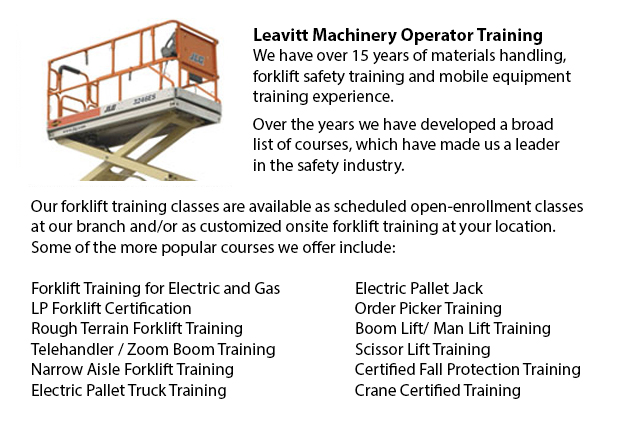
Scissor Lift License Whitby - The operation of scissor lifts carries an inherent risk of danger. Whatever type of powered machinery needs right handling in order to prevent accidents resulting in damage or injury. Companies should ensure that staff utilizing this machinery have the required experience.
Unskilled employees should not be allowed by their companies to make use of scissor lifts. The lift is designed to lift materials and people to various heights. Failure to know and fully abide by safety standard could result in injuries for the users or damage to the lift.
For those who use scissor lifts, there is no legislation governing the use of fall protection. However, manufacturers may suggest the utilization of fall protection and in some circumstances tying off in scissor lifts might be required by employer rules, job-specific risk assessments or local rules.
To be able to ensure that the scissor lift is in good working order prior to using the machine, the operator needs to carry out a thorough inspection. This is the operator's duty, even though the unit has already been in service that day. The operator's instruction manual of the equipment contains a pre-operation checklist.
Examples of what to look for when doing a pre-operation check consist of checking tire-inflation pressure, and checking controls in the platform and ground controls in order to make sure they are functioning. When retracting or extending the boom, watch for delayed movement on the fly section that can indicate cables are loose. Whilst operating the controls, make sure that the emergency stop switches are working. Operate functions against the machine's cutout switches. Test the boom control system by cycling a boom lift to the furthest extent of its operating envelope. Safety limiters should stop the unit automatically before it moves into an unstable position, if they are working properly. If they aren't, turn off the lift and make sure that repairs are made before it is used again.
Safe and proper operating measures should be followed always. Levers should be operated with even, controlled pressure. A control lever should never be pushed from one position to the opposite position. The lever must be shifted to neutral, before stopping, and then proceeding in the desired direction. When released, levers and control switches should automatically return to the neutral position. Depress the foot switch before operating platform controls.
-
Wheel Loader Operator Training Whitby
Wheel Loader Operator Training Whitby - To be able to lift considerable loads, industrial cranes use levers and pulleys. In the past, Roman people used cranes to be able to erect large monuments making the origin of these equipment at least two thous... More -
Aerial Lift / Boom Lift / Man Lift / Scissor Lift Training in Whitby
Scissor lifts are lift truck tables which lift up materials and people and supplies vertically. They are normally utilized in commercial, industrial and construction environments. A common use of scissor lifts is for lifting or lowering construction... More -
Manlift Operator Training Whitby
Manlift Operator Training Whitby - A specialized kind of hydraulic platform is called an aerial lift or a man lift. It is intended to lift an individual vertically up and down and thus, is likewise known as a vertical personnel lift. This machinery i... More -
Aerial Lift Ticket Whitby
Aerial Lift Ticket Whitby - A boom truck is frequently recognized by the cable and telephone business vans that have the extended arm folded over their roofs. Commonly, a bucket-like apparatus sits at the extension of extendable arms. Often known as... More -
Crane Training Whitby
Crane Training Whitby - Overhead cranes are otherwise known as bridge cranes. They are a kind of crane which has a line and hook mechanism which runs along a horizontal beam which runs along two widely separated rails. Numerous overhead cranes could... More -
Forklift Certification Schools Whitby
Forklift Certification Schools Whitby - Within North America, forklift certification is mandatory, making forklift training programs essential for both the company and their employees working as operators of forklifts. Forklift training focuses on he... More -
Crane Safety Training Whitby
Crane Safety Training Whitby - Companies and crane drivers need to be aware of the issues connected to crane safety. Legislation provides rules for the safe operation, inspection and maintenance of lifting machinery all around North America. Crane Sa... More -
Overhead Crane Certification Whitby
Overhead Crane Certification Whitby - The overhead crane certification course is a course that is designed to assist trainees, even if they have literacy or language restrictions. The program consists of a classroom theory part and a practical hands-... More

Forklift Training Whitby
TOLL FREE: 1-888-254-6157
Whitby, Ontario
forklifttrainingwhitby.com
Email Us
About Us


